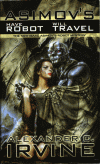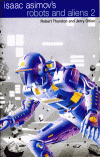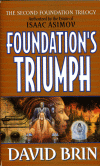Derec and Ariel have been exiled to Nova Levis, the site of the cyborg lab that was uncovered at the end of the previous series by Tiedemann. Derec has been focusing the resources of his lab on containing the mutating plagues released by Kynig Pyrapoyos. There is a murder on Kopernik station which appears to be committed by a robot, which Derec is summoned to investigate. In the meantime Ariel is asked to look into the possibility of cyborg survivors getting the right to vote.
One of my main disappointments with this book is that the plot lines don’t seem to pick up in pace until about the last quarter of the book. Irvine doesn’t seem to demonstrate the knack for complexity and pacing that Tiedemann did during the last trilogy. Besides these things the book was overall an enjoyable read. If I could pick out one good thing it would be that the plot lines switch back and forth often enough so that you aren’t stuck wondering what is happening in the other one for too long.
***Spoiler discussion for this novel & Robots and Empire****
I think the biggest question I have so far from Mirage up to this book is; what are Daneel and Giskard doing at this point? Are they aware of this society of robots which is being led by Bogard and Hofton? It is obvious that in this series the Zeroth law has been determined independently before Giskard and Daneel do at the end of Robots and Empire. The same conclusion is reached: isolate the spacers and allow the settlers to populate the galaxy. I am still wondering what will keep the aliens from Robots and Aliens isolated from the Settler expansion. Despite these nagging questions I think that all of these books so far have been an enjoyable read.



I really enjoyed this book! I thought it was interesting how cyborgs were trying to get the same rights as humans but the humans would rather kill them all than allow that. At the same time other robots were trying to redefine what a human is…the storyline was intriguing!